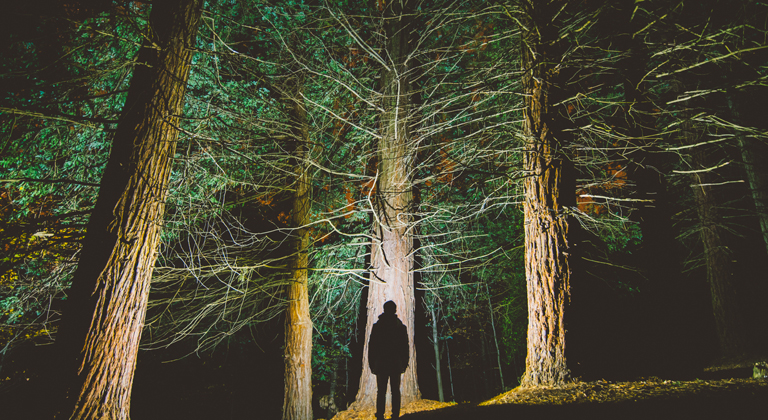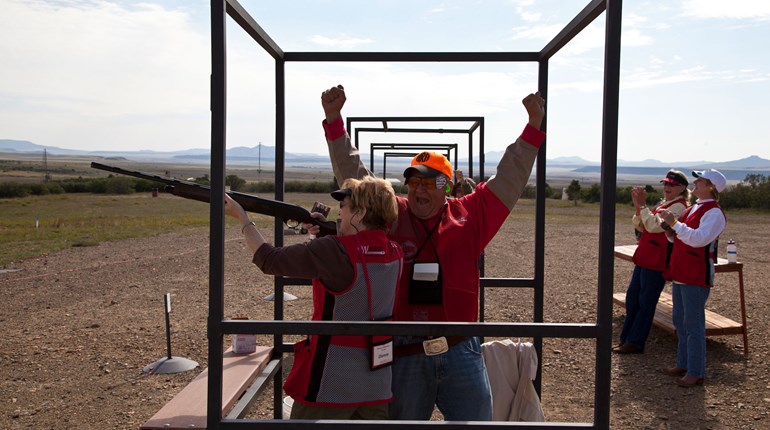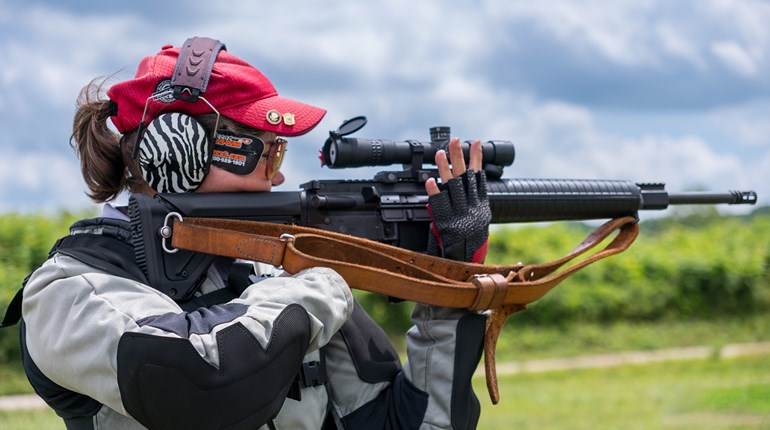
"I have no idea where we were," he said, "only that we'd been in the desert for a long time and that it felt endless." My friend leaned back in his seat, closing his eyes, and continued, "We were driving at night because the daytime temperatures were over 105 F. I was scared the car would overheat." Warming to his tale, he leaned back towards the group of us, sitting on the floor of my dorm room. "It was a full moon, I know that—I barely even needed my headlights. So that's why I'm so sure about what I saw."
"What did you see?" we chorused.
"It was...sort of like a coyote. But tall. It was running on its hind legs. And it was...it was looking right at me. Keeping pace with me and it was, I swear, it was smiling at me. I looked down at my speedometer. I was doing 75 miles an hour. I just kept going faster and faster, and it just stayed right there, about 30 yards to my left, pacing me. It was like it was playing with me, man."
"Oh, that?" said my roommate matter-of-factly. "That's a naagloshii," she said, the Navajo word sounding like a shiver of English whispered underwater. "The reservation is crawling with them."
She'd been silent up until now, so when my roommate spoke up, we attended. "What the...what's a na-ah-whatsit?" we asked.
"Evil," she said in that same impassive tone. "I'm kinda not supposed to talk about them," she continued, turning back to her Physics 201 homework. "You probably shouldn't either."
If you spend enough time in the outdoors—or even around people who spend enough time in the outdoors—sooner or later you'll hear a creepy story (or three) about the things that can happen when you're alone in the wilderness. Here are three of the scariest outdoor legends around...as well as the possible kernels of truth from which they sprang.
1. The Third Man Syndrome
“Who is the third who walks always beside you?
When I count, there are only you and I together
But when I look ahead up the white road
There is always another one walking beside you
Gliding wrapt in a brown mantle, hooded
I do not know whether a man or a woman
-But who is that on the other side of you?”
—T.S. Eliot, The Waste Land
The so-called "Third Man Syndrome" is the sensation, experienced by mountain climbers, polar explorers and shipwrecked sailors, that they have been joined by an unseen being or spirit that is helping them and providing comfort in their time of greatest need—like an imaginary friend. It's a well-documented phenomenon, reported by famous adventurers such as Peter Hillary, Ann Bancroft and Reinhold Messner. It seems to be most prevalent in people who are in extreme, life-threatening situations in which their bodies have been pushed to their physical limits and beyond. Many psychologists believe it's an example of a coping mechanism, but of course it could also be explained as part of the effects of anoxia or starvation.
Does "Third Man Syndrome" sound more comforting than eerie? Perhaps. But you may want to go ahead and finish your lunch before we move on to #2...
2. Wendigo Psychosis
"What caused us greater concern was the intelligence that met us upon entering the Lake, namely, that the men deputed by our Conductor for the purpose of summoning the Nations to the North Sea, and assigning them a rendezvous, where they were to await our coming, had met their death the previous Winter in a very strange manner. Those poor men (according to the report given us) were seized with an ailment unknown to us, but not very unusual among the people we were seeking. They are afflicted with neither lunacy, hypochondria, nor frenzy; but have a combination of all these species of disease, which affects their imaginations and causes them a more than canine hunger. This makes them so ravenous for human flesh that they pounce upon women, children, and even upon men, like veritable werewolves, and devour them voraciously, without being able to appease or glut their appetite – ever seeking fresh prey, and the more greedily the more they eat..."
—Jesuit Relations, 1661
The name for this syndrome is derived from the Wendigo, a "spirit of starvation and madness" originating with Northern First Nations tribes, like the Ojibwe and Algonquin. According to them, the Wendigo is an evil spirit that, should its touch infect you, will turn you into a cannibal..."Wendigo psychosis." The spirit itself, according to Ojibwe scholar Basil Johnston, is "...gaunt to the point of emaciation, its desiccated skin pulled tightly over its bones. With its bones pushing out against its skin, its complexion the ash gray of death, and its eyes pushed back deep into their sockets, the Wendigo looked like a gaunt skeleton recently disinterred from the grave."
Some anthropologists believe that the Wendigo myth is a way for northern tribes that often faced winter starvation to explain breaking the cannibalism taboo, which did happen from time to time. The legend was made famous in popular culture with the 1999 movie Ravenous and Stephen King’s Pet Sematary, but for the Native American tribes it came from, Wendigo psychosis was no campfire tale. People believed to have been infected by the Wendigo spirit were first given a ritual cleansing in an attempt to cure them. If the cure didn't take, as reported by Jesuit scholars in the seventeenth century, the sufferers were put to death.
Not creeped out yet? Then gird yourself for #3...
3. Skinwalkers
One cultural myth that can be found in just about every human society, regardless of location or dominant religion, is that of the shape-shifter. In Europe, there are stories of werewolves; in Japan, foxes who become women; in Africa, humans who become leopards. The Navajo have their own version: the Naagloshii, or Skinwalker. Essentially, a skinwalker is a shaman who has sold his or her soul in exchange for the ability to change into a variety of different animals, most notably wolves and coyotes. Unlike the European werewolf tradition, in which the werewolf is sort of a tragic figure who is not responsible for their fate, the skinwalker is just pure evil and has chosen to be that way. Part of the Navajo tradition, as my friends and I learned from my roommate's stubborn silence, is that even discussing skinwalkers with non-Navajos is strongly discouraged...so there's not a lot of academic research available on them.
The incidents that have been blamed on skinwalkers usually revolve around a person alone in the outdoors being stalked or menaced by an animal or animal-like being that is behaving uncharacteristically for an animal, such as walking on its hind legs or following cars. It is said that skinwalkers may call your name in a voice that seems familiar to you, in an attempt to lure you out of your home or tent.
Where did this legend come from? Many anthropologists have theorized that the European werewolf myth has its roots in the behavior and appearance of people who suffered from porphyria, a very real (if rare) group of diseases that can result in a strong skin reaction to sunlight, psychological disturbances and hallucinations. (Porphyria has also been theorized to be responsible for the vampire myth.) The skinwalker variant on that myth may reflect the strange appearance of bears or coyotes that suffer from the mange, a skin disease that results in hair or fur loss and will cause these pedestrian animals to look very unusual indeed. Both bears and coyotes are capable of walking on their hind legs, and it's known that sick animals sometimes don't avoid humans the way healthy ones tend to.
Wherever these myths came from, and whatever kernels of truth they might have sprung from, chances are good we aren't going to run into any trouble just by telling you about them...are we?







































